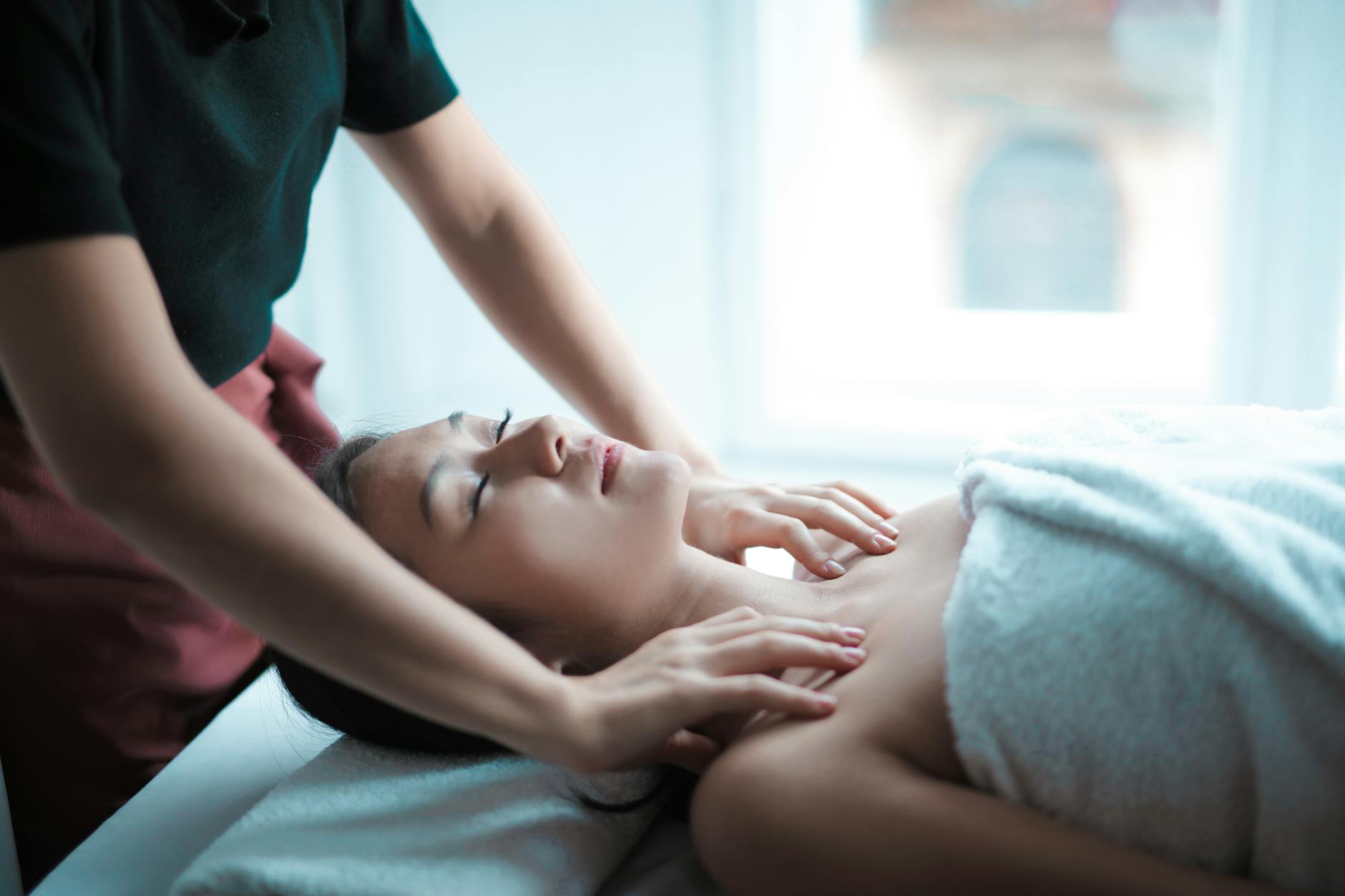
Cupping therapy has steadily moved from the world of ancient traditions into modern wellness routines, catching the attention of athletes, busy professionals, and anyone seeking better recovery. You may have seen the tell-tale circular marks on Olympic swimmers or sports stars, a sign of just how widely this therapy is being used to ease tension and support performance.
Today, it’s no longer limited to clinics or specialist studios with Blys, you can experience cupping therapy at home, carried out by trained professionals in the comfort and privacy of your own space.
Blys makes the process simple and safe, sending fully equipped and vetted therapists directly to you. This means you can explore the benefits of cupping massage without worrying about travel, time, or equipment.
In this guide, we’ll cover the basics of what cupping therapy involves, the benefits it can offer, how a session works at home with Blys, and whether it’s truly worth adding to your wellness routine.
What is Cupping Therapy?
Cupping therapy is one of the oldest recorded healing practices, with roots tracing back thousands of years in Traditional Chinese Medicine (TCM) as well as ancient Egyptian and Middle Eastern cultures. Traditionally, it was used to balance energy flow, relieve pain, and support the body’s natural healing processes.
Over time, it has been adapted into modern wellness, where athletes, office workers, and people managing everyday stress turn to cupping for its physical benefits. The core principle of cupping is simple yet powerful. By placing specialised cups on the skin and creating suction, negative pressure gently lifts the skin and underlying tissues.
This “decompression” effect is the opposite of what happens in most massage techniques, which use direct pressure to push into the muscles. Instead, cupping creates space in the tissues, encouraging better blood circulation, tension release, and a soothing sense of relief.
There are several variations of cupping you may come across today:
- Dry cupping: the most common method, where cups are left on the skin for a short period to draw up the tissue.
- Moving cupping: combines suction with massage-like movements as the cups glide across the skin with oil.
- Fire cupping: the traditional method, where heat creates the suction effect inside glass cups.
In modern wellness, dry and moving cupping are most widely used, as they are safe, effective, and adaptable for at-home treatments. When compared with traditional massage, cupping provides a unique complement instead of compression into tight muscles, it offers decompression to help them relax and recover.
Curious about the different techniques behind cupping therapy? Check out our guide to the types of cupping therapy and see which style could work best for your at-home session with Blys.
How Cupping Therapy at Home Works with Blys
Trying cupping therapy doesn’t need to be complicated or time-consuming. With Blys, you can book a professional cupping massage at home and enjoy the experience in your own space without the hassle of travelling to a clinic.
Here’s how it works:
- Simple booking: Reserve a session through the Blys website or app. Select the service, date, and time that suits your routine.
- Qualified therapists: Every practitioner is vetted, trained, and fully insured, so you can feel confident in the quality of care.
- All equipment provided: Your therapist brings everything needed, from sterilised cups to oils, ensuring a safe and hygienic setup.
- Your space, your comfort: Sessions can take place in your living room, bedroom, or any quiet corner, with no need for special preparation.
- Convenience and flexibility: Skip the traffic and waiting rooms. Blys therapists come to you at the time and place you choose.
This model makes it easy to fit wellness into your lifestyle. Whether you’re aiming for recovery after exercise, tension relief from work, or simply a new way to relax, Blys provides the flexibility to make it happen.
Curious about trying it yourself? Book your cupping massage at home today and see how effortless it can be to experience the benefits of this time-tested therapy.
Cupping Massage Benefits
Cupping therapy combines traditional wisdom with emerging scientific inquiry. Here’s a breakdown of the main benefits for clients considering cupping therapy at home through Blys each supported by current research.
1. Muscle tension relief
Cupping may help relieve tight muscles and fascia. A randomized clinical study found that traditional cupping on the trapezius area significantly reduced neck pain and improved mechanical pain thresholds compared to controls, with no adverse effects reported.
2. Improved blood and lymphatic circulation
Cupping lifts skin and underlying tissues, stimulating both blood and lymph flow. This enhanced circulation supports tissue healing and recovery, particularly in musculoskeletal conditions. A 2025 study also reported beneficial effects on microvascular circulation and musculoskeletal health in treated areas.
3. Relaxation and stress support
Though direct clinical studies are limited, cupping can promote relaxation through its soothing, decompressive effects much like restorative massage. Clients often describe a calming post-treatment sensation as tension releases.
4. Detox support via lymph flow
While “detox” is often overused, cupping may help support lymphatic movement and reduce fluid buildup. One traditional-source review explains how vacuum massage (akin to moving cupping) helps pull and release inflammation and support drainage through tissue layers.
Additional expert commentary highlights that lighter-pressure, movement-based cupping techniques may enhance lymph drainage and maintain tissue hydration.
5. Skin and fascia health (cellulite, scar adhesions)
Dry moving cupping has been shown in a pilot study to reduce the severity of cellulite in treated areas likely through improved microcirculation and lymphatic drainage. Reviews also suggest cupping may help hydrate and manipulate fascia, aiding flexibility and supporting skin appearance.
6. Delayed reduction in muscle fatigue
A controlled study using EMG analysis found that while cupping didn’t immediately reduce muscle fatigue, there were significant delayed improvements in neuromuscular recovery after exertion suggesting benefits for post-workout recovery.
On marks not bruises
One visible effect of cupping is the circular marks on the skin. These are not bruises in the usual sense but are natural responses to increased localized blood flow and tissue decompression. They typically fade within a few days and are part of a normal healing-like response.
Together, these findings reflect a blend of evidence-based outcomes and longer-standing traditional observations. When undertaken by a trained therapist as in a Blys at-home session cupping therapy can be a valuable addition to a wellness routine focused on recovery, relaxation, and better soft-tissue health.
Want to see what the research says about cupping? Explore the latest studies and evidence on cupping therapy to better understand how this treatment supports your at-home wellness routine with Blys.
Cupping vs. Traditional Massage
Massage and cupping are often grouped together in the wellness space, but the way they work on the body is quite different. Both share the same broad goal easing discomfort, improving recovery, and supporting overall wellbeing yet they approach it from opposite directions.
Massage relies on compression, using the hands, forearms, or elbows to press into muscles and tissues. This downward pressure helps release knots, reduce stiffness, and calm the body and mind. Cupping, on the other hand, relies on decompression. By creating suction, cups gently lift the skin and tissues upward, encouraging blood flow, loosening fascia, and creating space where tightness has built up.
Here’s how they compare:
|
Aspect |
Traditional Massage |
Cupping Therapy |
|
Technique |
Compression – pushing into muscles with hands | Decompression – suction lifts skin and tissue |
| Primary Sensation | Deep pressure, rhythmic kneading, soothing |
Gentle pulling, stretching, mild tightness |
|
Main Focus |
Muscle relaxation, stress relief | Circulation, fascia release, tension lifting |
| Common Uses | General relaxation, easing sore muscles, stress management |
Targeted pain relief, post-exercise recovery, mobility support |
| After-effects | Relaxed muscles, reduced stiffness, mental calm |
Circular marks from suction, improved blood flow, delayed muscle relief |
| Best For | Clients wanting immediate comfort and relaxation |
Clients seeking recovery, circulation, and deeper tissue release |
Many people find the two therapies complement each other beautifully. Massage creates immediate relaxation and helps reduce everyday tension, while cupping provides more targeted support for recovery and circulation. When combined, the two can deliver a well-rounded experience that addresses both physical and mental needs.
With Blys, you can choose a session that integrates both. Therapists are trained to blend cupping into your massage treatment, so you don’t have to decide between them. This way, you get the soothing benefits of massage alongside the targeted effects of cupping all in the comfort of your own home.
Safety and Considerations
Cupping therapy is widely regarded as safe when carried out by a trained professional, but like any wellness treatment, it’s important to understand where extra care is needed. Knowing the boundaries helps you get the benefits of the therapy without unnecessary risk. This is especially relevant for at-home treatments, where comfort and convenience are the goal, but safety still has to come first.
There are certain cases where it’s best to check with your GP before booking a cupping session:
- Pregnancy: particularly during the first trimester, or if you’ve had complications.
- Clotting disorders or anticoagulant use: as cupping increases local circulation, extra caution is advised.
- Skin conditions: including eczema, psoriasis, or very sensitive skin, where suction may worsen irritation.
- Recent injuries or wounds: open skin or infections should never be treated with cupping.
Another key consideration is how cupping is performed. DIY kits have become popular online, but using them without professional guidance can lead to poor suction control, unsafe placement of cups, or unhygienic practices that increase the risk of infection. Even when intentions are good, the wrong technique can do more harm than good.
That’s why professional guidance matters. With Blys, every therapist is qualified, vetted, and insured. They arrive with sterilised cups and the right oils, ensuring every session is conducted under safe and hygienic conditions. Before beginning, they’ll carry out a short consultation to understand your health background and tailor the treatment to your needs.
This extra step makes all the difference in both safety and effectiveness. It’s also worth noting that the circular marks left by cupping are a normal part of the process, not bruises. They typically fade within a few days and indicate increased blood flow in the treated area.
Choosing an at-home session with a trained Blys therapist means you get all the benefits of cupping with the reassurance that your health and safety remain the top priority.
Bringing Cupping Therapy Home With Blys
Cupping therapy has come a long way from its traditional roots, proving itself as a valuable option for anyone looking to ease muscle tension, improve circulation, and support recovery. Backed by both research and centuries of practice, it offers benefits that complement modern lifestyles where stress, long work hours, and physical strain are common.
What makes cupping even more appealing today is the ability to experience it in a setting that feels safe and comfortable your own home. With Blys, you don’t have to worry about organising equipment, finding a qualified practitioner, or losing time travelling to and from appointments. Every detail is handled for you, from sterilised cups to a professional therapist who tailors the session to your needs.
This blend of convenience and professional care makes cupping therapy not just effective, but also accessible as part of an ongoing self-care routine. Whether you’re an athlete aiming for quicker recovery, an office worker managing daily stress, or simply curious about trying something new, cupping can provide both relief and relaxation in a single treatment.
Taking care of your body doesn’t always require big changes sometimes it’s about choosing small, consistent steps that create long-term impact. Exploring cupping at home through Blys could be one of those steps.
Book your cupping therapy at home session with Blys today and bring the benefits of this ancient practice into your wellness routine.





